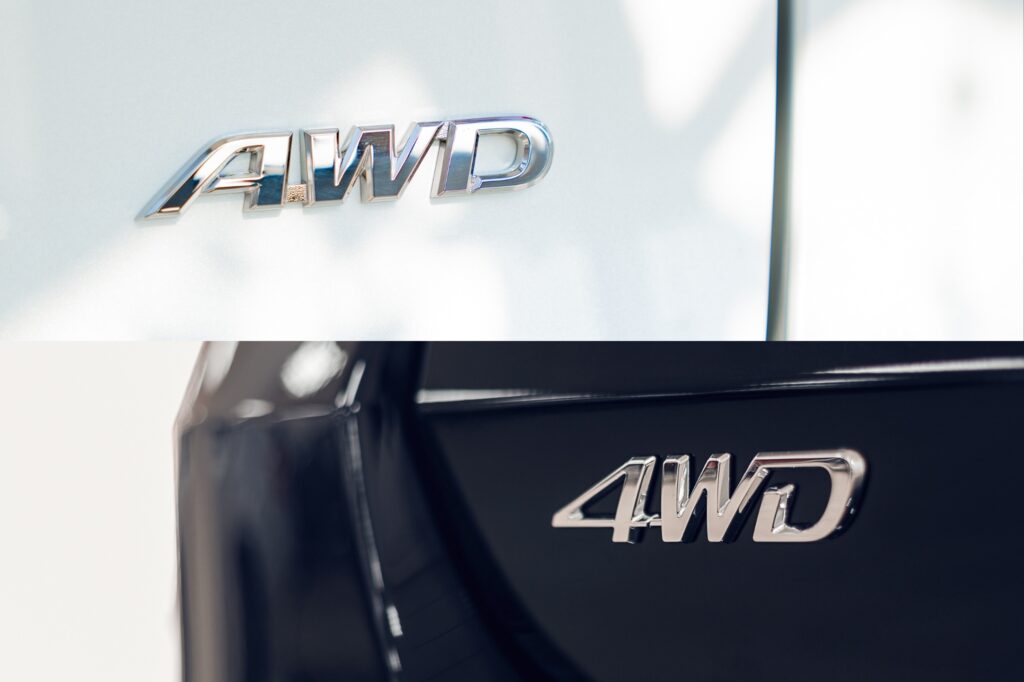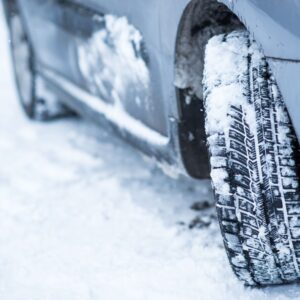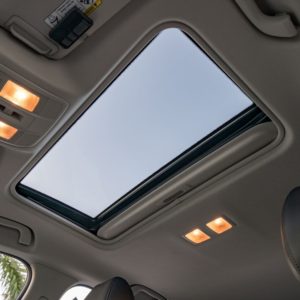The differences between a 4×4 and an all-wheel drive (AWD) vehicle often spark some confusion among those who are relatively new to the automotive scene. Let’s break down the design and operation of these two drivetrains.
4×4 vs AWD: Which Is Better?
Generally, a 4×4 and an AWD vehicle share a couple of similarities.

Both drivetrains are significantly more powerful than a regular two-wheel drive vehicle. Both also can send power to all four wheels.
In terms of design, both drivetrains usually use a viscous coupling or an electronically controlled clutch to lock or control the center differential.
As far as their differences go, there’s certainly a lot to break down. But if there’s one major thing that sets a 4×4 apart from an AWD, it’s that a 4×4 can work part-time on two wheels while an AWD is always operating on all four wheels by default.
A 4×4 or four-wheel drive vehicle has a transfer case with a low range. Meanwhile, an AWD vehicle typically doesn’t have a transfer case with a low range.
Understanding 4×4 Systems
A 4×4 vehicle has two differentials一one for the front wheels and another for the back. In a 4×4 setup, the front and rear wheels travel at different speeds when cornering and traversing over dips in the road.
The transfer case of a 4×4 lets the driver select a low-speed, high power gear ratio inside the transfer case while the vehicle is in four-wheel drive mode. These positions typically include:
- 4H – four-wheel drive with no gear reduction in the transfer case
- 4L – four-wheel drive with gear reduction; typically used during low speeds and slippery surfaces
- 2H – two-wheel drive (rear wheels only) in high range; no gear reduction in the transfer case
Activating any one of these positions will require the driver to turn a knob, push a button, or pull a lever, depending on the vehicle’s specifications.
Generally, 4x4s are meant for off-road use instead of being driven on paved roads. This is due to the locked driveline, which can make turning difficult. Regular drives on paved roads can also cause the tires of a 4×4 to wear unevenly.
But when a 4×4 is driven on low-grip surfaces, binding won’t be much of a problem since the tires can slide freely over the surface.
Understanding All-Wheel Drive Vehicles
Unlike four-wheel drive vehicles, all-wheel drive systems only have one high speed. AWD systems generally have a transfer case with a center differential and don’t use low-range gear reduction.
An all-wheel drive vehicle uses a viscous coupling that’s incorporated into the center differential, which helps provide superior all-weather traction. Most AWD systems have a limited slip differential in the rear, but some can also have the same setup in the front.
With this design, an all-wheel drive vehicle can provide impressive road traction under all driving conditions by default.
Advantages and Disadvantages of 4x4s and AWD Vehicles
Both 4×4 and AWD vehicles are great options because of how powerful their drivetrains are. Still, they have their own set of advantages and disadvantages that can greatly impact your decision in choosing which is better.
Pros and Cons of a 4×4
A 4×4 is best used for off-roading. Even in its 2WD setting, a 4×4 can easily get you over steep hills. But if you’re looking for a much-needed boost, going into 4H can get the job done.
One of the advantages of a 4×4 is that it can improve traction when driving under difficult road conditions, such as heavy snow and rocky paths.
Also, 4x4s tend to be heavier than regular vehicles, so the extra weight helps provide a better grip on the road.
In terms of disadvantages, a 4×4 can be quite costly to maintain because of the complex parts and extra equipment that come with it. You can also expect to spend more on fuel to get a 4×4 running because of the extra weight.
Another disadvantage of a 4×4 is the increased braking distance required to stop. Heavy vehicles like 4x4s can’t avoid collisions as easily as lighter vehicles.
Pros and Cons of an AWD
Like 4×4 vehicles, AWDs are also known for their improved traction compared to regular two-wheel drive vehicles. When all wheels have power, the probability of a vehicle skidding or slipping is significantly reduced.
Exceptional cornering is another feat that drivers love about an all-wheel drive vehicle. Regular vehicles can spin out of control even on a dry surface, but with an AWD, that scenario is less likely to happen.
With all these advantages, driving an all-wheel drive vehicle can lead to overconfidence, posing a problem for many drivers. Overconfidence in your vehicle can mean you have too much faith in technology. It could cause you to fail your duties as a driver, such as exercising caution when on the road.
Another disadvantage of driving an AWD vehicle is the complex system that comes with it, much like a 4×4. The added parts and systems can turn vehicle maintenance into a troublesome task as well as a costly one.
AWD vs. 4WD: The Verdict
There’s really no way to tell whether an AWD is better than a 4WD and vice versa until you look into your own needs as a driver. A 4×4 isn’t exactly for everybody, and the same goes for an AWD.
4x4s are intended for driving situations that require additional torque or power, such as pulling heavy loads. If you often drive with a trailer in tow, then a 4×4 might be the best drivetrain to get the job done with ease.
4x4s are also suitable for those who often deal with an incline or those who often experience driving under tough road conditions.
As for AWDs, such vehicles are best used by drivers who are constantly dealing with difficult road conditions minus the need for towing.
Any information provided on this Website is for informational purposes only and is not intended to replace consultation with a professional mechanic. The accuracy and timeliness of the information may change from the time of publication.




















